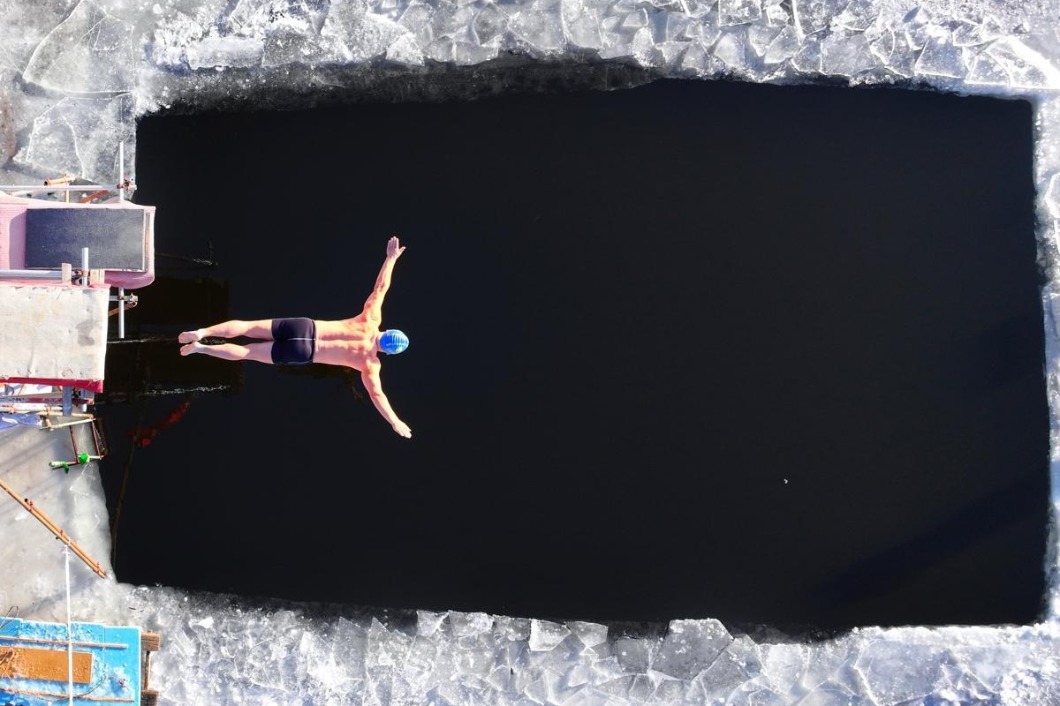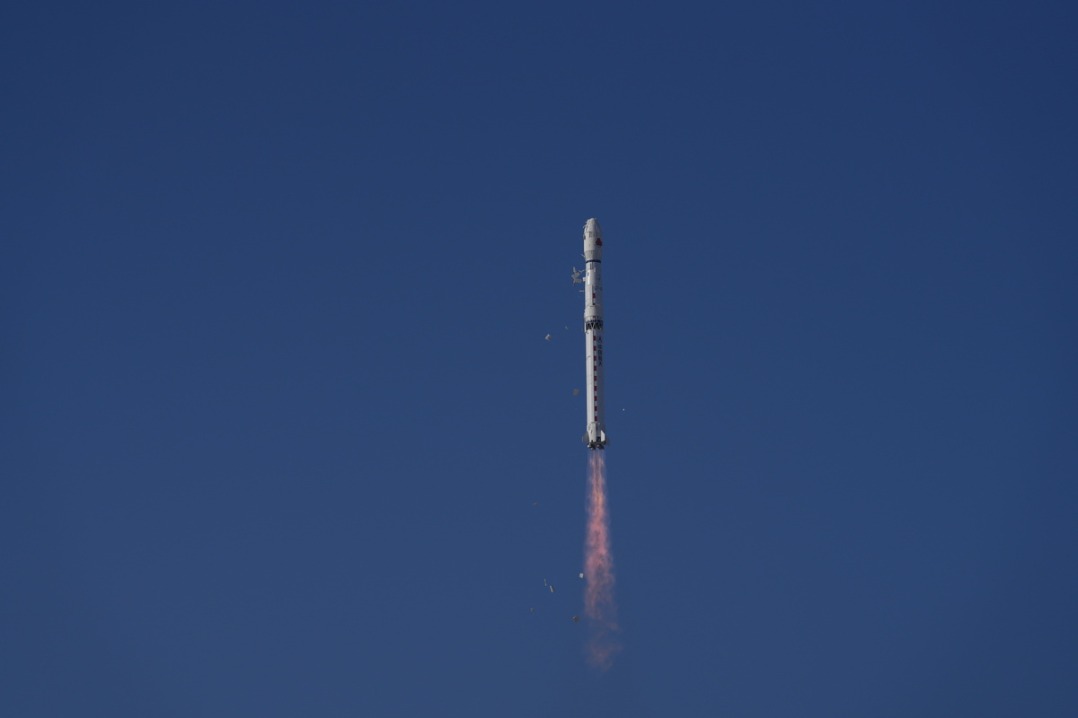Cross-domain drone makes rapid-fire switch between air and sea

Chinese researchers have developed a diving drone that can switch between flying and swimming and play a better role in cross-domain detection, remote sensing, disaster rescue and other scenarios.
The device is able to both fly as a standard quadcopter and explore underwater environments like a submersible. Researchers said it can be used for aerial and aquatic surveys and resource exploration as well as search and rescue tasks.
A team of scientists from the Shanghai Research Institute for Intelligent Autonomous Systems affiliated with Tongji University and another from the Unmanned Systems Research Group at the Chinese University of Hong Kong jointly developed the device, TJ-FlyingFish, which is presently in a functional prototype form.
The device, which weighs 1.63 kg and is 38 centimeters wide, can hover for six minutes in the air or operate underwater for 40 minutes per battery charge. It can work underwater at the speed of 2 meters per second and descend to a depth of up to 3 m.
Researchers said autonomous systems with the ability to function across different domains with better mobility and flexibility are the trend for research and development.
The devices could be either used alone in operations or together with other equipment and act as a messenger in a cross-domain collaborative system, realizing information transfer and interaction between cross-domain nodes, according to the researchers from Tongji.
A string of technical challenges had been conquered to make the device a reality. Scientists said when flying in the air and operating underwater, the device must adopt different postures and set off different systems to adapt to the properties of the environment.
TJ-FlyingFish looks similar to any other quadcopter. It consists of a central domed body and four arms, each with a propulsion unit at the end. Each propulsion unit incorporates a special dual-speed gearbox.
When the aircraft is in flight, all four of the units face upwards and spin their props. Once it lands on the water, the units rotate to face downward and spin at a lower speed, pulling the drone beneath the surface. In order to move both vertically and horizontally after it is fully submerged, the drone adjusts the angle and thrust of each propulsion unit as needed.
The device is also equipped with a trans-domain positioning and navigation system consisting of GPS, inertial measurement unit, depth meter and micro ultrasonic velometer, making it capable of completely automatic control at any point of its amphibious operation.
Researchers said interest has been shown by diverse industries to discuss application possibilities. The device can be made in different sizes and to adapt to deep or neritic sea environments after further technical breakthroughs.
- PM2.5 drops to lowest level in Beijing in 1st 11 months of 2025
- Number of digital consumers in China tops 958 million
- China issues regulation to promote public reading
- China's State Council Information Office hosts 2026 New Year reception
- Senior CPC official urges sound planning for 15th Five-Year Plan period
- 430 kg of cocaine seized in Shenzhen on US intel





































